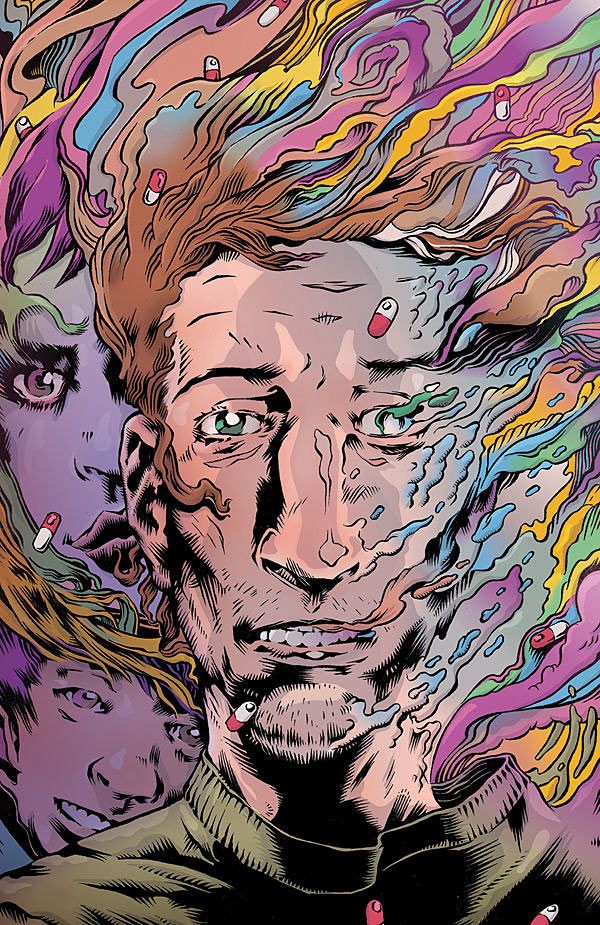"Neverboy" #1 delights with its high concept and wiry art, but it struggles to settle on an emotional core. Shaun Simon and Tyler Jenkins are wonderfully creative with this one and the issue is full of clever world building, but I didn't have much investment in the protagonist's problems. "Neverboy" is bursting with cool ideas, but it'll need to tie those ideas to a more compelling narrative as it develops.
High-concept comics always have a tough assignment for the first issue: though most readers will pick up the book because they're familiar with the pitch, the concept still has to be explained well enough in-text to feel like the meat of the story. It's therefore forgivable that most of "Neverboy" #1 is a gradually unwinding reveal of the premise. A former imaginary friend has escaped to reality using drugs and his own imagination and what starts off seeming like a lived-in family story spirals into the sort of tale where rainbows attack. Neverboy's untethering from reality takes place in bits and pieces before accumulating, and both Simon and Jenkins let the tension mount neatly.
Jenkins' looser, more interpretive figure work slides easily into the fantastic, so he was a great choice for "Neverboy." This really looks like a world where the imaginary is always dangerously close to invading. However, there's an added graininess that still keeps it grounded in city life, and colorist Kelly Fitzpatrick does a great job damping things down with lots of neutrals and olives. She also handles the slow transition out of reality slyly and quietly. I barely noticed Neverboy's hair changing color until it was nearly white.
Fitzpatrick does go full-on fantasy in a sequence from Neverboy's past where he and his human friend Sam built a miniature solar system. The colors are gorgeous, with the sky colored like someone tie-dyed an image from the Hubble telescope, and the two-page spread is framed perfectly around an old tree in the backyard. When Jenkins draws the miniature planets dangling or cupped in the characters' hands, it all looks evanescently lovely and utterly breakable. I could feel what Neverboy had lost when he lost his friend.
However, my enchantment with this sequence also points to the central problem of "Neverboy" #1: the central conflict isn't tied to a strong emotional core. There are so many cool ideas here, but the central narrative doesn't feel fleshed out yet. It's revealed that Neverboy wants to stay with his imagined family, but there are forces that want to drag him away. This is a compelling conflict in theory, but none of the scenes in this issue really establish Neverboy's love for his family or vice versa. The connection with Sam is the strongest one here, but it isn't set up as the focus of the book.
In its opener, "Neverboy" looks amazing; the question here isn't whether this team has enough creative energy to put forth a great series. Instead, the question is whether all these intriguing ideas can be tied to a strong, persuasive arc for the title character.

